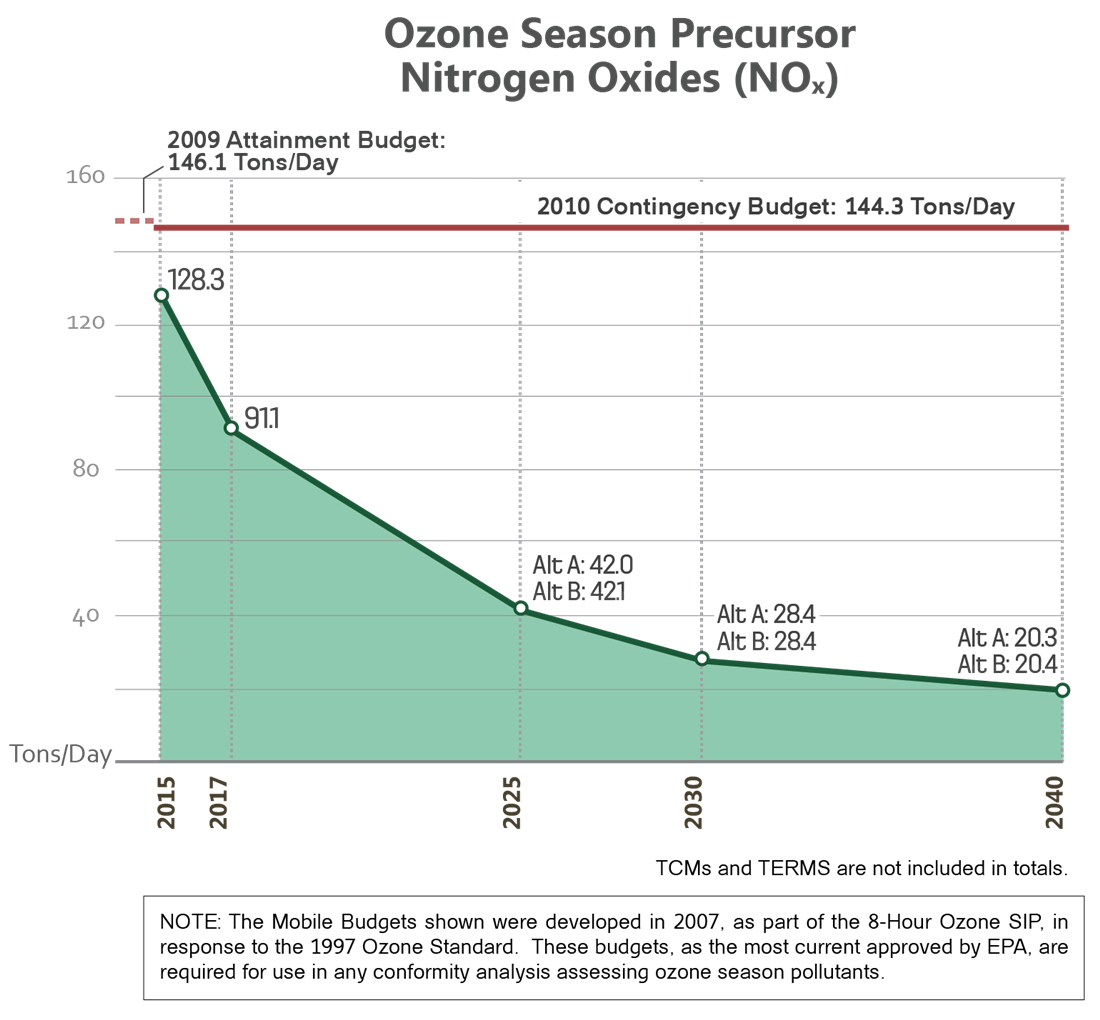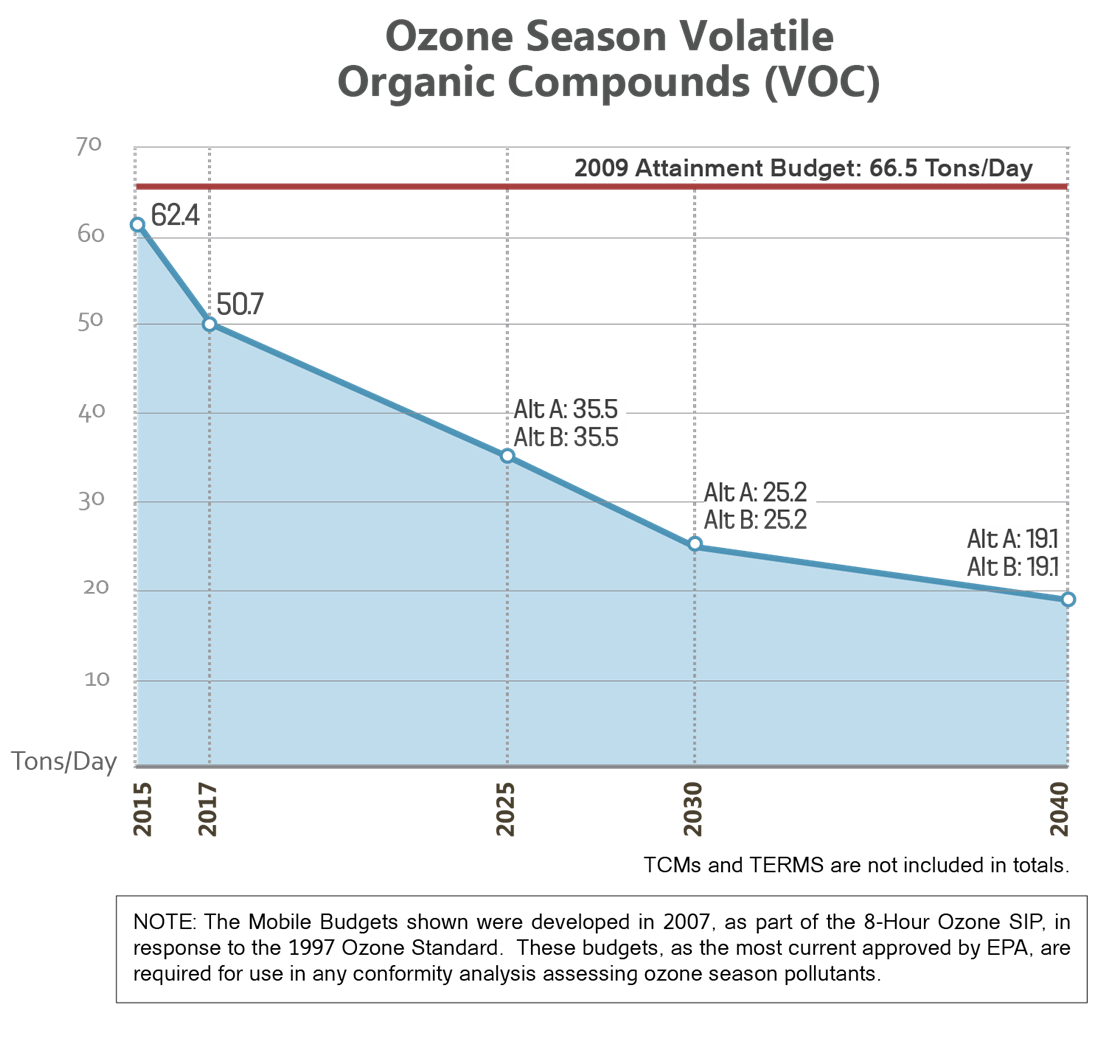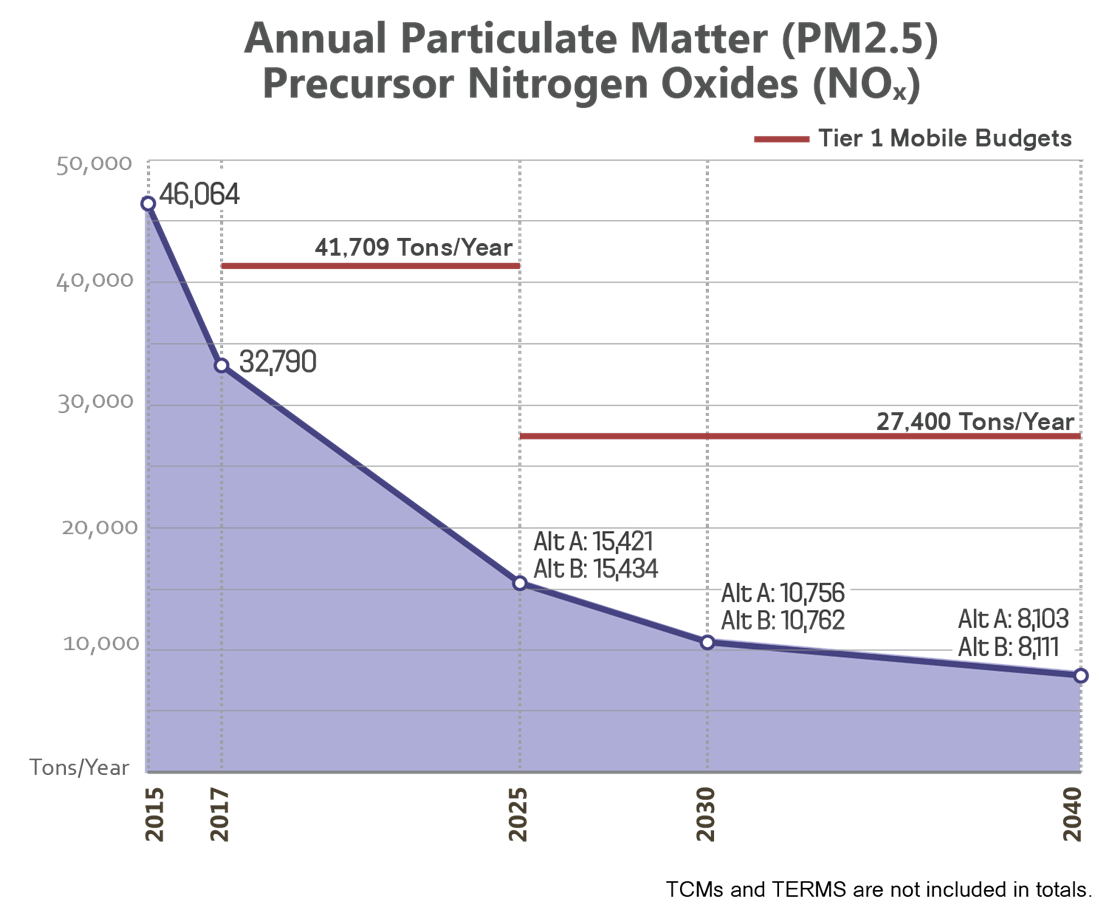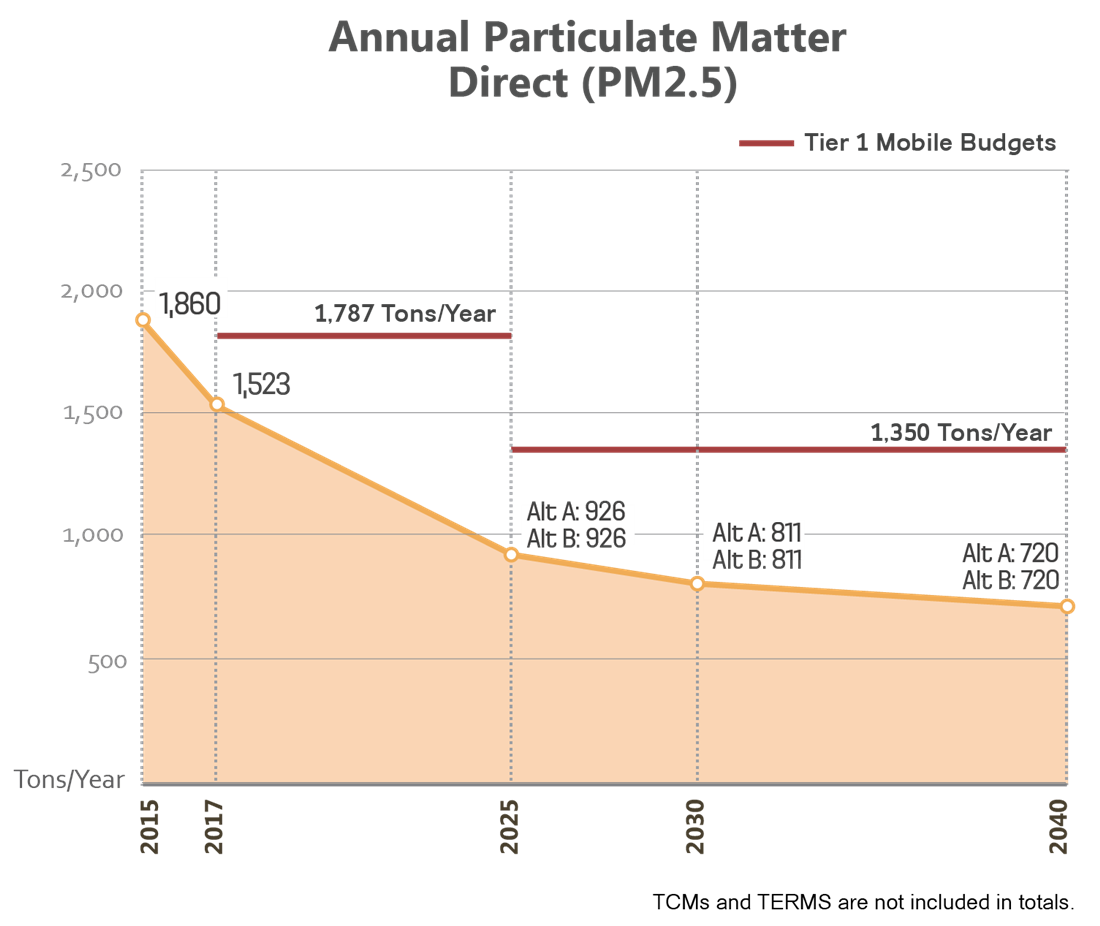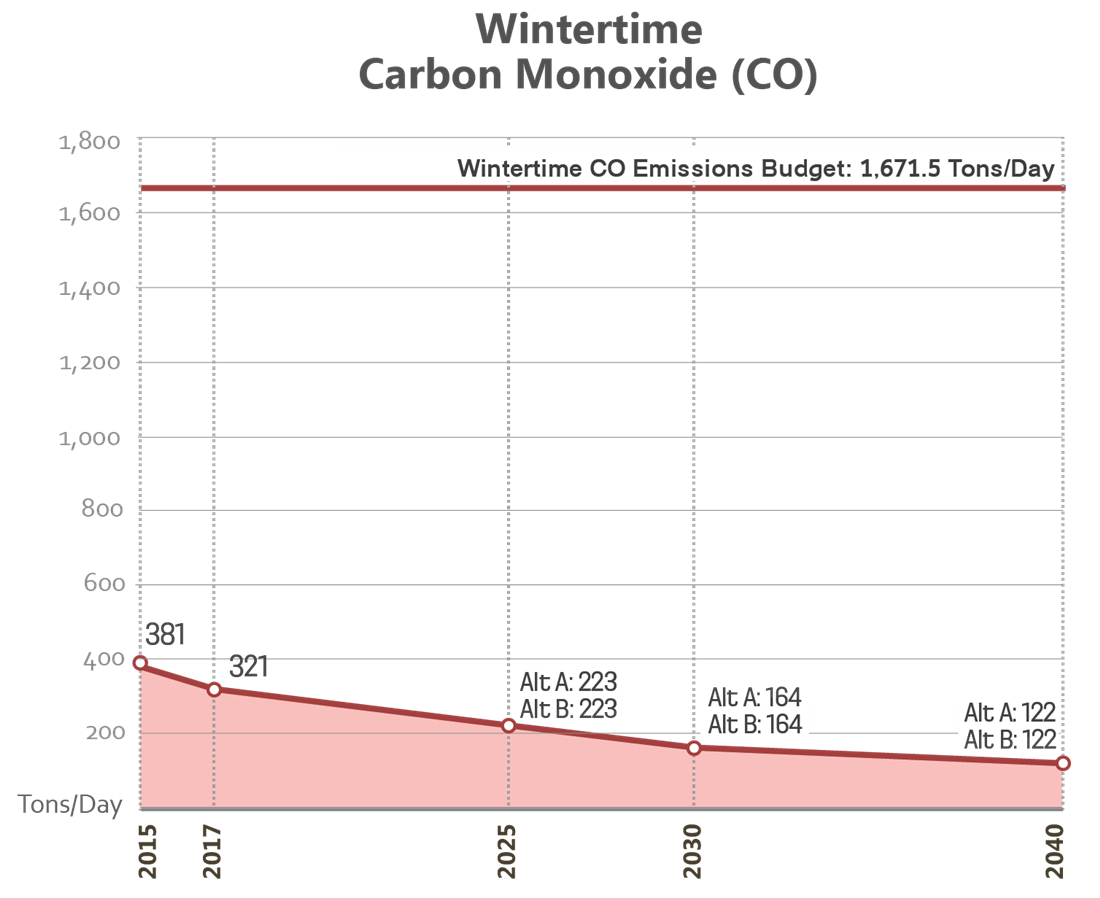The Metropolitan Washington Air Quality Committee (MWAQC) is the body responsible for developing the regional air quality plan in close coordination with development of the CLRP.
MWAQC and the TPB are concerned with emissions of smog-producing Volatile Organic Compounds (VOCs) and Nitrogen Oxides (NOx). These pollutants combine in sunlight on hot summer days to form ground-level ozone. Motor vehicles are responsible for a large portion of VOC and NOx emissions in the region, but so are non-mobile sources like power plants.
In addition to NOx and VOCs, the plan also tracks and estimates emissions of particulate matter of less than 2.5 micrometers in diameter (PM2.5). PM2.5 is of special concern because these ultra-fine particles can easily lodge in the lungs of humans and cause health problems. Since concern about PM2.5 has developed relatively recently, PM2.5 was not tracked or estimated in 1990.
Analysis of the 2015 Amendment to the CLRP shows reductions of emissions of all three main pollutants between now and 2020. The data show that estimated emissions are well within the mobile source emissions budget for each pollutant for 2017, 2025, 2030, and 2040. These results reflect the impact of better vehicle standards, cleaner fuels, and fleet turnover, as well as changes in development patterns, investment in transit and other travel options, and improved operational efficiency or area roadways.
